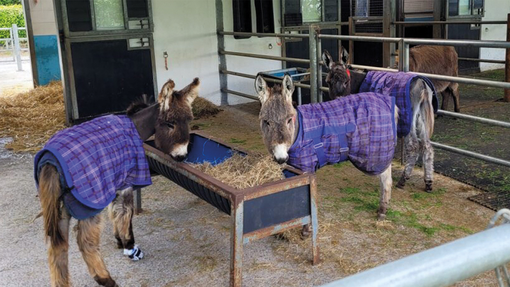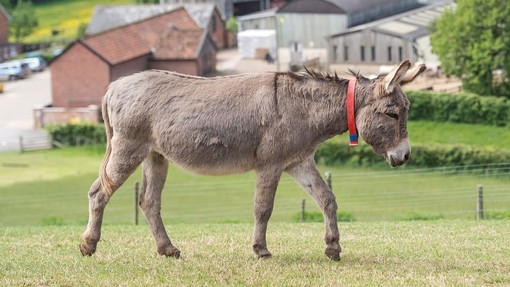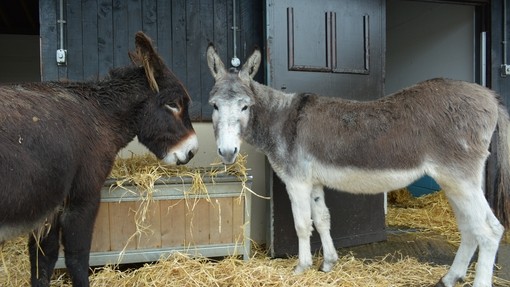Re-feeding donkey tips
- Re-feeding should be very gradual and kept simple initially with only good quality hay or high fibre haylage (e.g. Horsehage High Fibre) being fed (unless the donkey has dental problems and cannot manage long fibre).
- Donkeys should have access to grazing (care should be taken not to turn out on lush or frosty grazing), initially for periods of about 2-3 hours at a time, increasing this by an hour every 2-3 days.
- Donkeys should have access to a vitamin and mineral block as a minimum but ideally should be fed a balancer such as Top Spec Comprehensive gradually building up to be fed at a rate of 100g/100Kg BW.
- Donkeys should be kept warm by the provision of shelter and rugs.
- Thin donkeys with long coats may need clipping in summer as they are likely to be more susceptible to heat stress as their metabolic rate rises
Suggested re-feeding programme
Day 0-3
Initially donkeys should be fed at 50% of their current (poor body condition) energy requirements (0.75% of BW in dry matter). Good quality hay or high fibre haylage (e.g. Horsehage High Fibre) should be all that is fed initially, fed in small quantities (up to ¼ Kg) every 4-6 hours. If teeth are poor a low energy and low non-structural carbohydrate (NSC) hay replacement product (e.g. Happy Hoof) can be fed instead.
Day 4
After the initial 2-3 day adaptation period the donkey can be fed to 100% of its current weight requirements (up to ½ kg) every 4-6 hours.
Day 6-14
Over the next week or so the amount of hay fed can be increased to that of the donkey’s ideal bodyweight (1.5% of BW in dry matter).
Day 15 onwards
Allow the donkey adlib access to forage, this may be good quality hay, high fibre haylage or a combination of the two. For those with poor teeth a hay replacement product can be fed at the rate of 2-3kg per day.
At this point it would be a good idea to introduce a feed balancer such as TopSpec Comprehensive which, in addition to vitamins and minerals, will provide the donkey with a moderate level of protein to help rebuild lost muscle.
Once the donkey is approaching a body condition score of 2 it would be wise to start introducing straw back into the diet in anticipation of a more normal straw based diet for the future.
Once the donkey has reached a body condition score of 3 and is otherwise healthy, the balancer can be changed to TopSpec Donkey Forage Balancer which is more appropriate for maintenance. Some donkeys may benefit from additional supplementary nutritional support during the refeeding period.
Note
It is important to bear in mind that an animal that has been unable to stand for 72 hours or more will have a very poor prognosis for recovery, even with aggressive treatment, as will animals that have lost 45-50% of their bodyweight.




